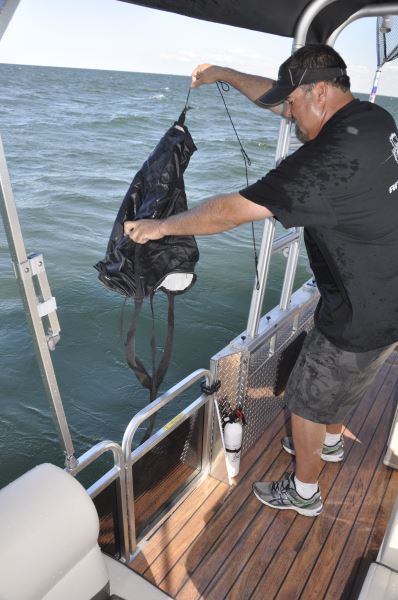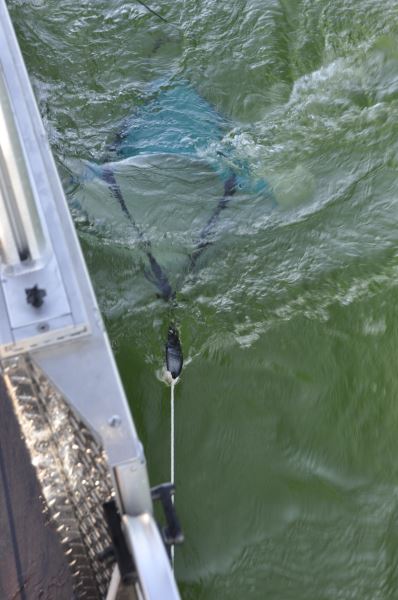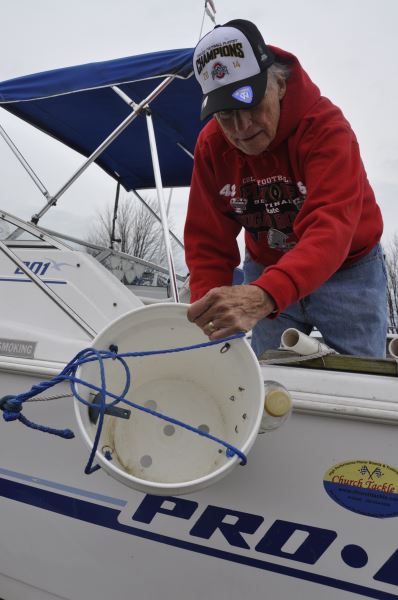
March can be breezy and higher-profile fishing craft can be a challenge to control when attempting to drift, troll or maneuver at slow speeds under primary or electric motor power. In this age of high tech accessories designed to help you do everything from back your trailer down the launch ramp to parallel park your boat against a dock, the remedy is as simple as it is radical. Solving something as simple as slowing the drift of a boat should be a no-brainer for developing the next “must-have” accessory breakthrough (can you say “power anchors?”), but nothing to date compares with the effectiveness and adaptability of a device that sailors have deployed for eons. They are known as “drogues” and “sea anchors” to sailors, and “drag bags” or “drift socks” to present-day fishermen, and the best way to control your boat’s progress, whether drifting with the breeze or under power, is a dragged bucket or bag.

What’s more, if you toss a drift sock or five-gallon pail over your rail to simply slow your trolling speed or stifle your drift on a breezy day, you’re missing out on the full potential of modern-day drift socks.
You can employ these sub-surface parachutes in a variety of ways to help your fishing effort, from keeping your drift broadside to allow maximum casting room for anglers aboard to steering the boat when used in conjunction with electric motors. At anchor, dropping a bucket or drift sock off the side can stabilize a boat in rough conditions, buffering the rocking and lurching, as well as keeping the boat positioned at an angle to the anchor, wind and/or current to maximize fishing opportunities.
The same is true while drifting, when a drag bag can be used to control the direction and angle of the drift along a shoreline, weed line or underwater break. High profile boats such as pontoons have a tendency to drift with the bow down-wind. Adding a drift sock to the bow will direct the boat to drift perpendicular to the breeze. Adding a second, smaller sock to the transom will slow the boat down even more, while maintaining the proper angle of drift. When the wind really picks up, using a drift control of some type can make the difference between being able to fish or not by simply slowing the boat down to a pace from which lures can be cast, drifted or trolled.
 Slowing trolling speed remains the most common use for buckets and drift socks. Multi-purpose boats with larger engines that aren’t rigged for fishing with an electric or kicker motor may not be able to slow down enough to effectively pull baits through the water. Even boats with smaller primary engines may suffer fouled plugs and stalling when operated at their lowest RPMs for extended trolling periods. Dragging a pickle bucket or drift sock can reduce a boat’s pace up to 2 mph from the slowest attainable speed and allow anglers to troll lures designed to fool fish that won’t respond to fleeter tactics.
Slowing trolling speed remains the most common use for buckets and drift socks. Multi-purpose boats with larger engines that aren’t rigged for fishing with an electric or kicker motor may not be able to slow down enough to effectively pull baits through the water. Even boats with smaller primary engines may suffer fouled plugs and stalling when operated at their lowest RPMs for extended trolling periods. Dragging a pickle bucket or drift sock can reduce a boat’s pace up to 2 mph from the slowest attainable speed and allow anglers to troll lures designed to fool fish that won’t respond to fleeter tactics.
Whether dragging a dedicated drift sock or basic five-gallon bucket, just remember to pull them in before you power-up, or risk kissing it—and perhaps the cleat that secured it—goodbye!